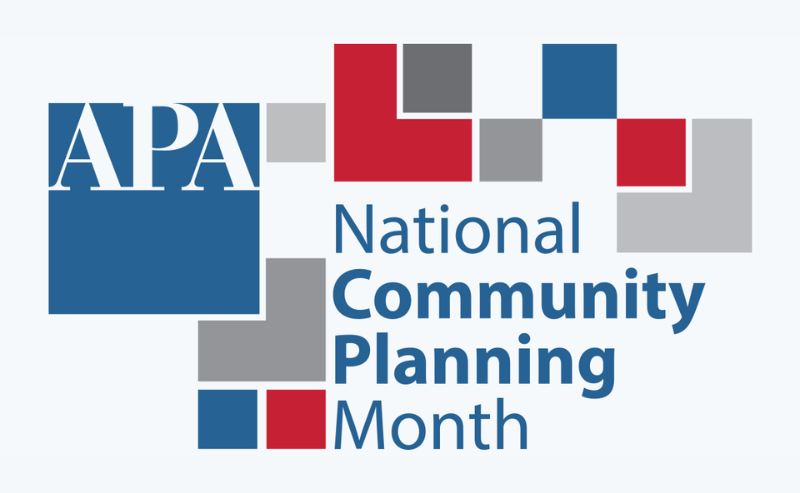Every year, FEMA (in conjunction with the National Planning Association) recognizes October as National Community Planning Month. Its purpose is to identify long-term, equitable solutions that reduce risk from natural hazards; in other words, to plan today to be more resilient tomorrow.
According to FEMA, “Planning is the best step state, local, tribal, and territorial governments can take to build a safer tomorrow. It helps us assess natural hazard risk in their communities and understand how it is changing. Planning also allows us to craft an equitable process that builds long-term, risk-informed plans.”
This year, the agency is reminding those involved in emergency management and hazard mitigation planning of three important things to consider in their current (and future) planning efforts: equity, land use, and climate change data. While each is addressed in detail in the State and Local Mitigation Planning Policy Guides released earlier this year (April 19, 2022), the following information, taken verbatim from FEMA, sheds some initial light on them.
Equity
By leading with equity, mitigation planners and partners can form strategies that reflect the needs of the whole community and ensure these needs are met, and resources are equitably shared. Inclusive planning processes take time and thought — all interests and voices must have a chance to take part in the planning and have the opportunity to act to reduce risks to future natural hazards.
Land Use
Careful land use planning can lead to long-term risk reduction and increased resilience. Our landscapes are shaped by where, how, and what we build. One of the strongest measures communities can take is to develop a land use strategy that considers mitigation.
Land use strategies work best when the community champions them. All community voices must buy into the overall land use vision, the desired end uses, and the resulting execution strategy.
Climate Change Data
Climate change data plays a vital role in planning. Evolving environmental hazards bring more intense storms, floods, and temperatures to places and people who have suffered in the past. These hazards now pose new threats to communities across the nation.
It is important for emergency managers at all levels of government to understand the risks and make a plan to reduce those risks. Consult with partners who have expertise in climate change and climate adaptation to select and use climate projection data to understand the risk. This can include the state climatologist, academic partners, or a state department responsible for climate planning.
In Summary
As a reminder, the aforementioned updated policies, previously known as the “Plan Review Guides,” have been renamed State Mitigation Planning Policy Guide (FP 302-094-2) and Local Mitigation Planning Policy Guide (FP-206-21-0002).
The policies are the official interpretation of the mitigation planning requirements in the Robert T. Stafford Disaster Relief and Emergency Assistance Act (Stafford Act), as amended and other federal statutes as well as in federal regulations, specifically Title 44 CFR Part 201- Mitigation Planning. The policies will be in effect for all mitigation plans approved on or after April 19, 2023. Plans that are not approved by the effective date will have to meet the requirements in the updated policies.
October, National Community Planning Month, is the perfect time to visit FEMA’s Hazard Mitigation Plan Status to see if your community has a plan and how to access it. In doing so, also keep in mind that FEMA offers numerous funding options to undertake hazard mitigation projects that directly address future risk. These include, but are certainly not limited to:
– Building Resilient Infrastructure and Communities (BRIC), a competitive process that provides non-disaster-related funding to states, local communities, tribes, and territories,
– Hazard Mitigation Grant Program (HMGP), which provides funding to state, local, tribal, and territorial governments so they can develop hazard mitigation plans and rebuild in a way that reduces, or mitigates, future disaster losses in their communities,
– Flood Mitigation Assistance (FMA), which provides funding for a variety of planning and project types, including property acquisition (repetitive loss), structural elevations, and green space conversions; and
– Safeguarding Tomorrow Through Ongoing Risk Mitigation (STORM), a new revolving loan fund (similar to the Clean Water Act) that became law on January 1, 2022, provides loans for zoning and land-use planning.
To learn more about these grants, visit FEMA’s Mitigation Planning and Grants page.
Last but not least, and in recognition of National Community Planning Month, register for FEMA’s Planning Information Exchange Webinar, Foresight and Scenario Planning for Hazard Mitigation and Climate Adaptation, on October 31, 2022, 1:30 – 2:30 PM ET.






